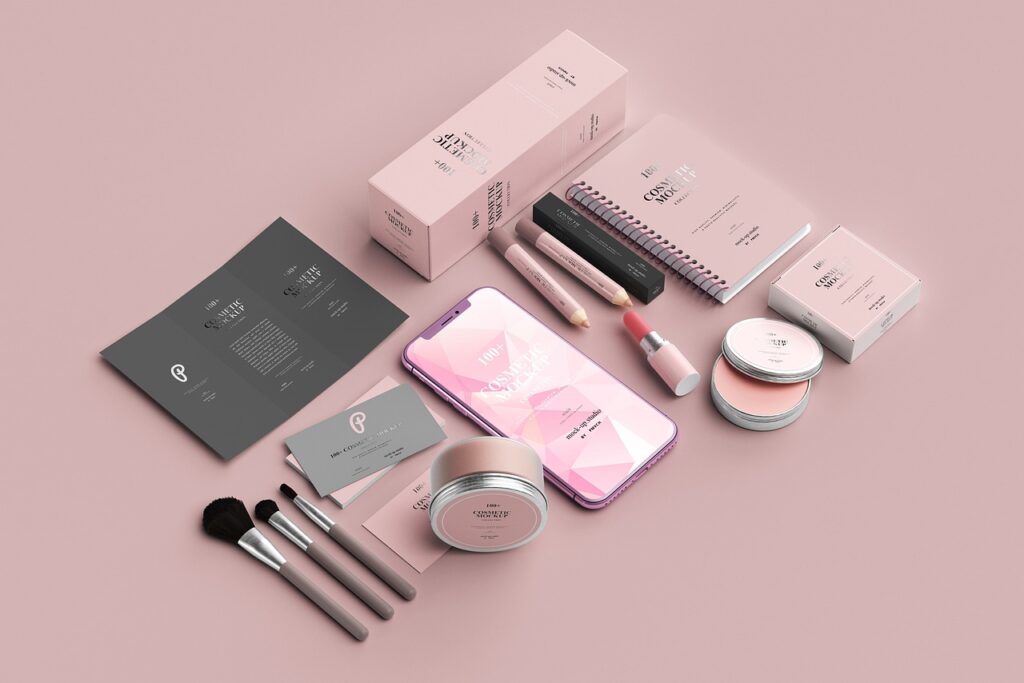Thanks to innovation, VR and AR are becoming increasingly accessible tools for various industries. Whereas in the beginning, Virtual and Augmented Reality was popular mainly due to the gaming industry, they can now be found elsewhere. The importance of this trend was highlighted by the COVID-19 pandemic, which limited a large number of activities in the “real” world. Many have decided to use pandemic measures to their advantage with AR and VR. In a recent study, they found that up to 75% of companies in the prestigious ranking of the renowned magazine, which evaluates the world’s most profitable companies, are trying to innovate the environment for customers and employees using Virtual or Augmented Reality.
According to a recent estimate by Goldman Sachs, AR and VR are expected to grow into a $77 billion market by 2025. The most substantial demand for the technologies currently comes from industries in the creative economy—specifically, gaming, live events, video entertainment and retail.
Solution: Test and diversify into new ad formats to make their ads work harder for each dollar spent. Interactive experiences drive higher engagement resulting in lower cost.
Solution: Need to test and diversify into new ad formats to build 1st party data across every consumer journey touchpoint: real, social, and virtual.
There are many benefits of AR media and marketing strategy. Some of the best digital marketing agencies are figuring out that this is a win for the client and an added value. Markets today are increasingly driven by the needs and desires of consumers. Therefore, companies change their operating methods by moving towards experiential marketing strategies. Faced with an increasingly saturated and competitive market, companies are constantly looking for innovative solutions that aim to improve their positioning and turnover and, on the other, the search for new customers and the loyalty of those already acquired.
Augmented Reality has indeed found one of its main applications in marketing. Today, the postmodern consumer has the possibility of prefiguring the position of a piece of furniture in their living room even before buying it or, thanks to Smart mirrors, to check if a dress fits perfectly before even wearing it. And it is precisely the possibility of increasing engagement and customization that makes AR in marketing a winning combination for the future company.
Starting from the assumption that technology must be considered and treated as a platform, companies and brands have begun to understand how Virtual Reality, applied to creative ideas and integrated into communication or marketing campaigns, can have a decisive involvement towards people, capturing their attention and managing to tell an experience in a completely immersive way.
Virtual Reality makes it possible to “immerse” users in an environment that is entirely outside the box or even replicate a familiar environment, stepping into the shoes of another person. In other words, it is a technology capable of powerfully evoking emotions and closeness to the message or story to be communicated. There are countless ways to give your audience an enjoyable experience through Virtual Reality. With the continuous growth in visibility and actual content, the Virtual Reality platform has promoted new opportunities in media and marketing.
Virtual Reality is a perfect marketing tool for live events; it’s time to put aside promotional videos and focus on promoting your brand with fully immersive content for your audience. Thanks to the innovative technology, clear focus and effective staging, VR stands to leave a long-lasting positive impression on visitors and make it easier for your team to showcase the product benefits unforgettably.
Virtual Reality has featured in several movies and TV programmes. It is often used to illustrate the concept of being trapped within the machine (or, in this case, cyberspace) or as a form of advanced technology. This technology has formed part of experimental sound displays and sound installations. Another use is VR musical instruments which the person can interact with these instruments as a new type of performance or create unique compositions.
VR guerilla marketing encourages and engages customers to participate in the experience. Rather than the traditional marketing model, where customers are passive participants in receiving advertising messages, marketers believe that customers should be active participants in a marketing campaign by using VR technology.
Let us boost your marketing campaign: Start by booking a free consultation with us!
By clicking the “send” button, I agree to the collection and processing of my personal data as described in the Privacy Policy.

In today’s luxury beauty landscape, digital transformation is not an option; it’s a necessity. The expectations of high-end consumers have evolved far beyond traditional...
Read More
In the luxury hospitality industry, timeless elegance and world-class service are fundamental. Nonetheless, today’s guests ask for much more than that, seeking innovative, immersive,...
Read More
Exclusivity, personal relationships, and hands-on experiences have traditionally driven the luxury real estate industry. However, as technology rapidly advances, the integration of AI and...
Read More| Cookie | Type | Duration | Description |
|---|---|---|---|
| __cf_bm | 30 minutes | This cookie, set by Cloudflare, is used to support Cloudflare Bot Management. | |
| __hssc | 30 minutes | HubSpot sets this cookie to keep track of sessions and to determine if HubSpot should increment the session number and timestamps in the __hstc cookie. | |
| __hssrc | session | This cookie is set by Hubspot whenever it changes the session cookie. The __hssrc cookie set to 1 indicates that the user has restarted the browser, and if the cookie does not exist, it is assumed to be a new session. | |
| __hstc | 1 year 24 days | This is the main cookie set by Hubspot, for tracking visitors. It contains the domain, initial timestamp (first visit), last timestamp (last visit), current timestamp (this visit), and session number (increments for each subsequent session). | |
| _clck | 1 year | No description | |
| _clsk | 1 day | No description | |
| _fbp | 3 months | This cookie is set by Facebook to display advertisements when either on Facebook or on a digital platform powered by Facebook advertising, after visiting the website. | |
| _ga | 2 years | The _ga cookie, installed by Google Analytics, calculates visitor, session and campaign data and also keeps track of site usage for the site's analytics report. The cookie stores information anonymously and assigns a randomly generated number to recognize unique visitors. | |
| _gat_gtag_UA_189660369_1 | 1 minute | Set by Google to distinguish users. | |
| _gat_UA-189660369-1 | 1 minute | A variation of the _gat cookie set by Google Analytics and Google Tag Manager to allow website owners to track visitor behaviour and measure site performance. The pattern element in the name contains the unique identity number of the account or website it relates to. | |
| _gid | 1 day | Installed by Google Analytics, _gid cookie stores information on how visitors use a website, while also creating an analytics report of the website's performance. Some of the data that are collected include the number of visitors, their source, and the pages they visit anonymously. | |
| ANONCHK | 10 minutes | The ANONCHK cookie, set by Bing, is used to store a user's session ID and also verify the clicks from ads on the Bing search engine. The cookie helps in reporting and personalization as well. | |
| CLID | 1 year | No description | |
| CONSENT | 2 years | YouTube sets this cookie via embedded youtube-videos and registers anonymous statistical data. | |
| cookielawinfo-checkbox-advertisement | 1 year | Set by the GDPR Cookie Consent plugin, this cookie is used to record the user consent for the cookies in the "Advertisement" category . | |
| cookielawinfo-checkbox-analytics | 0 | 11 months | This cookie is set by GDPR Cookie Consent plugin. The cookie is used to store the user consent for the cookies in the category "Analytics". |
| cookielawinfo-checkbox-functional | 0 | 11 months | The cookie is set by GDPR cookie consent to record the user consent for the cookies in the category "Functional". |
| cookielawinfo-checkbox-necessary | 0 | 11 months | This cookie is set by GDPR Cookie Consent plugin. The cookies is used to store the user consent for the cookies in the category "Necessary". |
| cookielawinfo-checkbox-others | 0 | 11 months | This cookie is set by GDPR Cookie Consent plugin. The cookie is used to store the user consent for the cookies in the category "Other. |
| cookielawinfo-checkbox-performance | 0 | 11 months | This cookie is set by GDPR Cookie Consent plugin. The cookie is used to store the user consent for the cookies in the category "Performance". |
| CookieLawInfoConsent | 1 year | Records the default button state of the corresponding category & the status of CCPA. It works only in coordination with the primary cookie. | |
| elementor | never | This cookie is used by the website's WordPress theme. It allows the website owner to implement or change the website's content in real-time. | |
| fr | 3 months | Facebook sets this cookie to show relevant advertisements to users by tracking user behaviour across the web, on sites that have Facebook pixel or Facebook social plugin. | |
| hubspotutk | 1 year 24 days | HubSpot sets this cookie to keep track of the visitors to the website. This cookie is passed to HubSpot on form submission and used when deduplicating contacts. | |
| MUID | 1 year 24 days | Bing sets this cookie to recognize unique web browsers visiting Microsoft sites. This cookie is used for advertising, site analytics, and other operations. | |
| pll_language | 1 year | The pll _language cookie is used by Polylang to remember the language selected by the user when returning to the website, and also to get the language information when not available in another way. | |
| SM | session | No description available. | |
| SRM_B | 1 year 24 days | Used by Microsoft Advertising as a unique ID for visitors. | |
| viewed_cookie_policy | 0 | 11 months | The cookie is set by the GDPR Cookie Consent plugin and is used to store whether or not user has consented to the use of cookies. It does not store any personal data. |
| VISITOR_INFO1_LIVE | 5 months 27 days | A cookie set by YouTube to measure bandwidth that determines whether the user gets the new or old player interface. | |
| YSC | session | YSC cookie is set by Youtube and is used to track the views of embedded videos on Youtube pages. | |
| yt-remote-connected-devices | never | YouTube sets this cookie to store the video preferences of the user using embedded YouTube video. | |
| yt-remote-device-id | never | YouTube sets this cookie to store the video preferences of the user using embedded YouTube video. |
